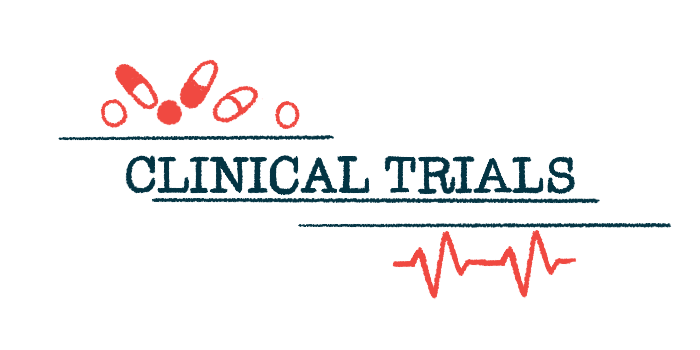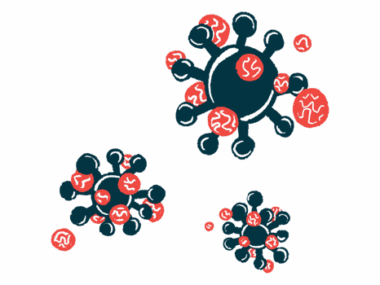Uplizna benefits sustained over long term: Final trial data
Results show efficacy of targeting B-cells in NMO, researchers say
Written by |

Long-term treatment with Uplizna (inebilizumab) was well tolerated and led to sustained disease control for adults with neuromyelitis optica spectrum disorder (NMOSD).
That’s according to final data from the open-label extension period of the Phase 2/3 N-MOmentum clinical trial (NCT02200770), top-line data of which supported the therapy’s approval for NMOSD around the world.
The findings overall offer “evidence for the safety and efficacy of [Uplizna] in the long-term treatment of neuromyelitis optica spectrum disorder,” the researchers wrote.
The study, “Safety and efficacy of inebilizumab for the treatment of neuromyelitis optica spectrum disorder: end-of-study results from the open-label period of the N-MOmentum trial,” was published in The Lancet Neurology. It was funded by Uplizna’s previous developer MedImmune and current developer Horizon Therapeutics, now a part of Amgen.
Uplizna is an antibody-based therapy that aims to reduce levels of B-cells, a family of immune cells integral to the autoimmune attacks against healthy parts of the nervous system that cause NMOSD symptoms. It’s approved in the U.S., Canada, and Europe for adults with NMOSD who have antibodies against the AQP4 protein, the most common type of NMOSD-driving self-reactive antibodies.
Treatment reduced relapse risk, disability progression in trial
Approvals were backed by the N-MOmentum trial, which enrolled 230 adults with NMOSD who had experienced at least one NMOSD relapse requiring treatment in the last year or two relapses requiring rescue therapy in the previous two years.
More than 92% of patients were positive for anti-AQP4 antibodies.
Participants were randomly assigned to receive 300 mg of Uplizna (174 people) or a placebo (56 people) via infusion into the bloodstream on days 1 and 15, and were followed until they had a disease relapse or for as long as about six months.
Trial results showed that the therapy reduced the risk of NMOSD relapses by 77% relative to a placebo among patients positive for anti-AQP4 antibodies. The treatment was also associated with a significantly lower risk of disability worsening, lower hospitalization rates, and fewer active brain lesions compared with placebo.
Once the trial showed that Uplizna was effective, an open-label extension phase was initiated in which all patients received Uplizna every six months for a minimum of two years. Most patients in each group, a total of 216 people, opted in.
Previous analyses from this part of the trial have shown that Uplizna continued to prevent disease attacks for most patients without any new safety concerns.
Relapse risk declined over time
The latest report concerned N-Momentum’s final findings. Patients had been treated with Uplizna for a median of a little over three years. Most patients (85%) received Uplizna for more than two years, 55% for over three years, and more than a third (36%) for more than four years.
After the last Uplizna dose, all patients but one were followed for one year to assess the therapy’s safety.
Results overall showed that the risk of NMOSD relapse progressively declined over time across the main study period and open-label extension for patients on Uplizna.
Across the study population, 63 attacks occurred in 47 patients (21%) while on Uplizna. Forty of those attacks happened during the first year of treatment, with the incidence declining quickly thereafter, “suggesting improving efficacy with ongoing treatment,” the researchers wrote.
More than three-quarters of patients (77%) who experienced one attack did not have a subsequent attack.
The probability of being attack-free was 85% after a year on Uplizna and 77% after four years. Annualized attack rates declined year-to-year during the open-label period.
The annualized end-of-study attack rate was 0.092 attacks per year. Overall, similar observations were made in the subgroup of patients positive for anti-AQP4 antibodies.
Relative to the placebo group during the main part of the trial, patients given Uplizna at any time had fewer NMOSD-related hospitalizations, fewer new or enlarging brain lesions, and better physical health-related life quality throughout the study, and a sustained slowing of disability progression.
Compared with historical findings from untreated or placebo-treated patients collected from other studies, Uplizna was associated with a significantly lower risk of relapses. And when compared with the subgroup of AQP4-positive patients, “data suggested that the significant decrease in attack risk related to [Uplizna] observed during the [placebo-controlled] period was not only sustained but appeared to improve with long-term treatment,” the researchers wrote.
As in previous analyses, Uplizna was generally well tolerated, and no new safety concerns were identified. The most commonly reported adverse events occurring during treatment were urinary tract infection, common cold, and joint pain. Infusion-related reactions, reported in up to 12% of all patients, were most common after the first Uplizna dose, “becoming less frequent at subsequent infusions,” the team wrote.
Long-term treatment with Uplizna did not lead to increasing rates of infections over time, the researchers noted.
“These results, together with our previously published data on the reduction of attack risk in participants regardless of disease history, demographics, or previous therapies … highlight the efficacy of targeting and depleting [B-cells] when treating neuromyelitis optica spectrum disorder,” the team concluded.







